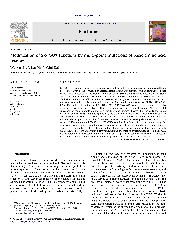摘要
SR-PSOX can function as a scavenger receptor, a chemokine and an adhesion molecule, and it could be an interesting player in the formation of atherosclerotic lesions. Our previous studies demonstrated that basic amino acid residues in the chemokine domain of SR-PSOX are critical for its functions. In this study the combinations of the key basic amino acids in the chemokine domain of SR-PSOX have been identified. Five combinations of basic amino acid residues that may form conformational motif for SR-PSOX functions were selected for multi-point mutants. The double mutants of K61AR62A, R76AK79A, R82AH85A, and treble mutants of R76AR78AK79A, R78AR82AH85A were successfully constructed by replacing the combinations of two or three basic amino acid residues with alanine. After successful expression of these mutants on the cells, the functional studies showed that the cells expressing R76AK79A and R82AH85A mutants significantly increased the activity of oxLDL uptake compared with that of wild-type SR-PSOX. Meanwhile, the cells expressing R76AK79A mutant also dramatically enhanced the phagocytotic activity of SR-PSOX. However, the cells expressing the construct of combination of R78A mutation in R76AK79A or R82AH85A could abolish these effects. More interestingly, the adhesive activities were remarkably down regulated in the cells expressing the multi-point mutants respectively. This study revealed that some conformational motifs of basic amino acid residues, especially R76 with K79 in SR-PSOX, may form a common functional motif for its critical functions. R78 in SR-PSOX has the potential action to stabilize the function of oxLDL uptake and bacterial phagocytosis. The results obtained may provide new insight for the development of drug target of atherosclerosis.
- 出版日期2013-2
- 单位同济大学
